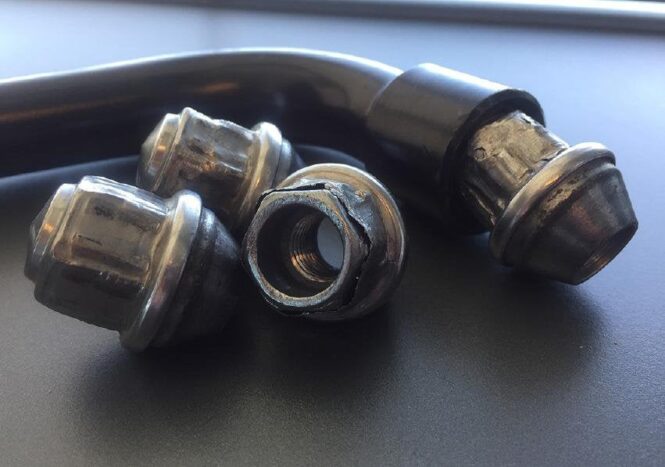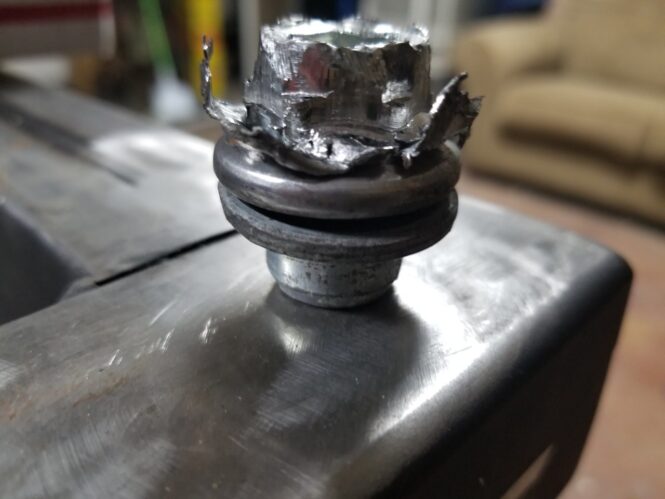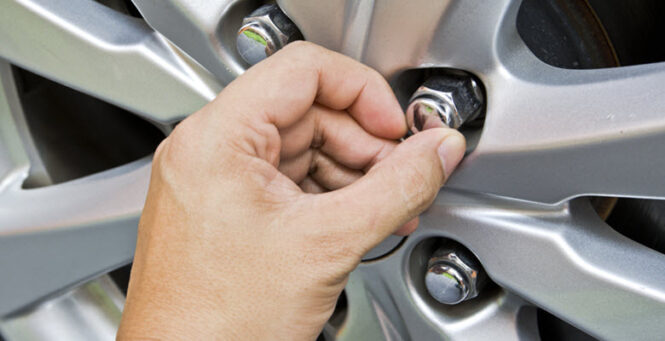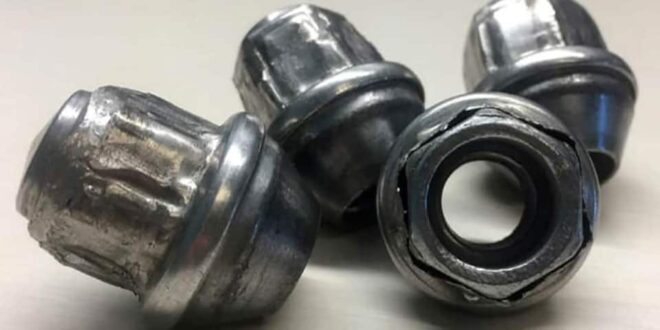Swollen lug nuts can be a frustrating and potentially dangerous issue for vehicle owners. Lug nuts are supposed to last as long as you drive the vehicle. However, over time, these nuts can become swollen, meaning they become slightly larger and distorted, making it difficult to remove them or causing them to become stuck in place.
If you’re faced with swollen lug nuts while attempting to change a flat tire or conducting routine maintenance on your vehicle, it can be both challenging and hazardous. Furthermore, any delay in rectifying the issue may lead to more severe damage to your car. In this article, we will cover what causes swollen lug nuts and how to spot them, as well as offer tips for addressing the situation promptly and safely.
What Causes Swollen Lug Nuts?

Swollen lug nuts can occur due to several reasons, and it is important to understand them in order to prevent any potential damage. It’s crucial to identify the root cause of swollen lug nuts and take appropriate measures to fix the issue promptly, as ignoring it may lead to further complications such as wheel damage or even accidents while driving.
Corrosion
The culprit behind swollen lug nuts is oxidation or corrosion due to poor material quality or exposure to a harsh environment. Lug nuts that are exposed to moisture and dirt can corrode over time. This corrosion can cause the lug nuts to expand, making them difficult to remove and potentially damaging the wheel or the stud.
Wrong torque
Poor installation can be detrimental to your lug nuts. Lug nuts that are over-tightened can cause the threads to stretch and deform, leading to swelling. This issue often occurs when a mechanic uses an impact wrench or other tool to tighten the lug nuts beyond the recommended torque setting. Over-tightening can put excessive pressure on the nut, causing it to warp and expand as it tries to accommodate the extra force. The stretching of threads not only leads to swelling but also reduces their strength and durability, making them more prone to breakage or damage in the future.
To prevent this problem, it’s essential to follow the manufacturer’s recommended torque specifications for your vehicle’s lug nuts during installation or removal. You can find them in the manual or on websites like wheelssize.com. It’s also important to use high-quality tools like a good torque wrench that provides accurate readings of torque settings, ensuring that they don’t exceed what is necessary for safe and secure wheel attachment.
On the other hand, under-torquing can pose another danger. Moisture and dirt can get in the gap and prompt corrosion. Additionally, under-torqued lug nuts can also lead to premature wear and tear on your vehicle’s wheels and suspension system, reducing their lifespan and performance over time.
Poor material quality
Low-grade metals that don’t have a good protective layer can quickly succumb to oxidation when exposed to the elements, making lug nuts overly difficult and time-consuming to unscrew. This is especially noticeable in areas of high humidity or during winter seasons where roads are salted regularly.
How to Identify Swollen Lug Nuts?

If you suspect that one or more of your lug nuts may be swollen, it is important to have them inspected by a qualified mechanic as soon as possible to avoid any safety hazards. But you can do it alone by looking closely for the signs of damage:
- Rust or corrosion may be visible signs on swollen lug nuts, especially in the case that they have been exposed to dampness and other environmental circumstances.
- If you take a close look, it’s possible to observe that your lug nuts may appear unusually larger with a bulging or distorted shape. Swollen lug nuts are easily identifiable signs of potential damage, usually when it is too late to help.
- Struggling to take off a lug nut? It could be that it has swollen, meaning it’ll be tighter than normal and may require additional strength for removal.
- If your wheel is not mounted firmly on the hub or appears to be wobbly, it may indicate that one or more lug nuts are loose and unable to secure the wheel correctly.
How to Prevent Swollen Lug Nuts?

Swollen lug nuts can be a frustrating and potentially dangerous issue for drivers. These nuts can become difficult to remove, leading to damaged tires and wheels and even accidents on the road. Preventing swollen lug nuts is important for maintaining the safety and longevity of your vehicle. By following these tips, you can avoid the headache and expense of dealing with swollen lug nuts.
- Consistent cleaning of the lug nuts is essential: Dirt, debris, and other pollutants can cause rusting and corrosion over time if not removed. Staying on top of this by regularly wiping down your lugnuts will keep them in great shape.
- To avoid potential damage, make sure you securely tighten the lug nuts to their manufacturer-specified torque specifications. To reduce the risk of thread swelling, exercise caution not to overtighten or under-tighten them.
- Make sure to employ a torque wrench when fastening the lug nuts on your wheels – this will guarantee that they are tightened correctly and as per specifications. Doing so prevents potential swelling and damage to the threads, ensuring long-term safety for everyone involved.
- To maintain the integrity of your vehicle, it is essential to replace any damaged lug nut immediately. Allowing a broken or worn lug nut to remain can cause irreversible damage – such as swelling and thread deterioration – that would be costly and time-consuming to repair.
Whatever you do, avoid applying anti-seize products to the lug nuts. It might help with preventing corrosion, but in fact, this extra step does more harm than good. Anti-seize products are slippery. They take away some of the resistance when you torque the nuts. So even if you are using a precise torque wrench and check with the specifications, your readings will be off. And too much torque is another issue entirely.
How to Deal with Swollen Lug Nuts?
Sometimes the signs of swelling can be not very apparent, making it impossible to fix the situation before it gets worse. If you encounter swollen lug nuts, it’s important to take action to address the issue.
To avoid damage to the threads or wheel studs, never attempt to force the lug nuts. If you insist on doing it yourself, utilize a penetrating oil such as WD-40 which can ease rust and corrosion.
If the lug nuts are too swollen to remove with a regular wrench or socket, a lug nut extractor tool can be used to grip and turn the nut. But it is best to get professional help.
If you have managed to remove swollen nuts yourself, check the wheel stud and hub for damage before replacing the lug nuts. If you notice any damage, it’s important to replace the affected parts.
 Imagup General Magazine 2024
Imagup General Magazine 2024



